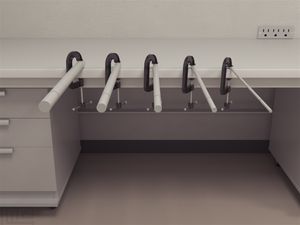

- Products
- Catalogs
- News & Trends
- Exhibitions
Behavioral research experiment maze Hebb Williamsfor micefor rats
Add to favorites
Compare this product
Characteristics
- Applications
- for behavioral research
- Animal type
- for mice, for rats
Description
Product Info
The Hebb-Williams Maze is a behavioral task used for studying spatial working memory animals (Pritchett & Mulder 2004, Raut et al. 2014). It was observed that rodents have a remarkable ability to learn spatial locations, especially when baited with food rewards, and this has been adapted into a behavioral task. The maze consists of a square area with moveable internal walls, allowing the maze to be configured differently for each trial. There are six acquisition maze layouts and twelve testing maze layouts in the Hebb-Williams Maze battery. This task requires use of spatial working memory, and this ability to learn and remember the path through the maze can be effected by the administration of certain drugs or disease models.
Related Searches
- Activity meter
- Animal research cage
- Modular animal research cage
- Experiment maze
- Mice experiment maze
- Rat experiment maze
- Animal research experiment maze
- Rodent animal research cage
- Analgesia meter
- Operant behavior system
- Mice animal research cage
- Animal research analgesia meter
- Mice activity meter
- Rat operant behavior system
- Mice operant behavior system
- Benchtop operant behavior system
- Rat activity meter
- Behavioral research activity monitor
- Behavioral research experiment maze
- Elevated plus experiment maze
*Prices are pre-tax. They exclude delivery charges and customs duties and do not include additional charges for installation or activation options. Prices are indicative only and may vary by country, with changes to the cost of raw materials and exchange rates.















